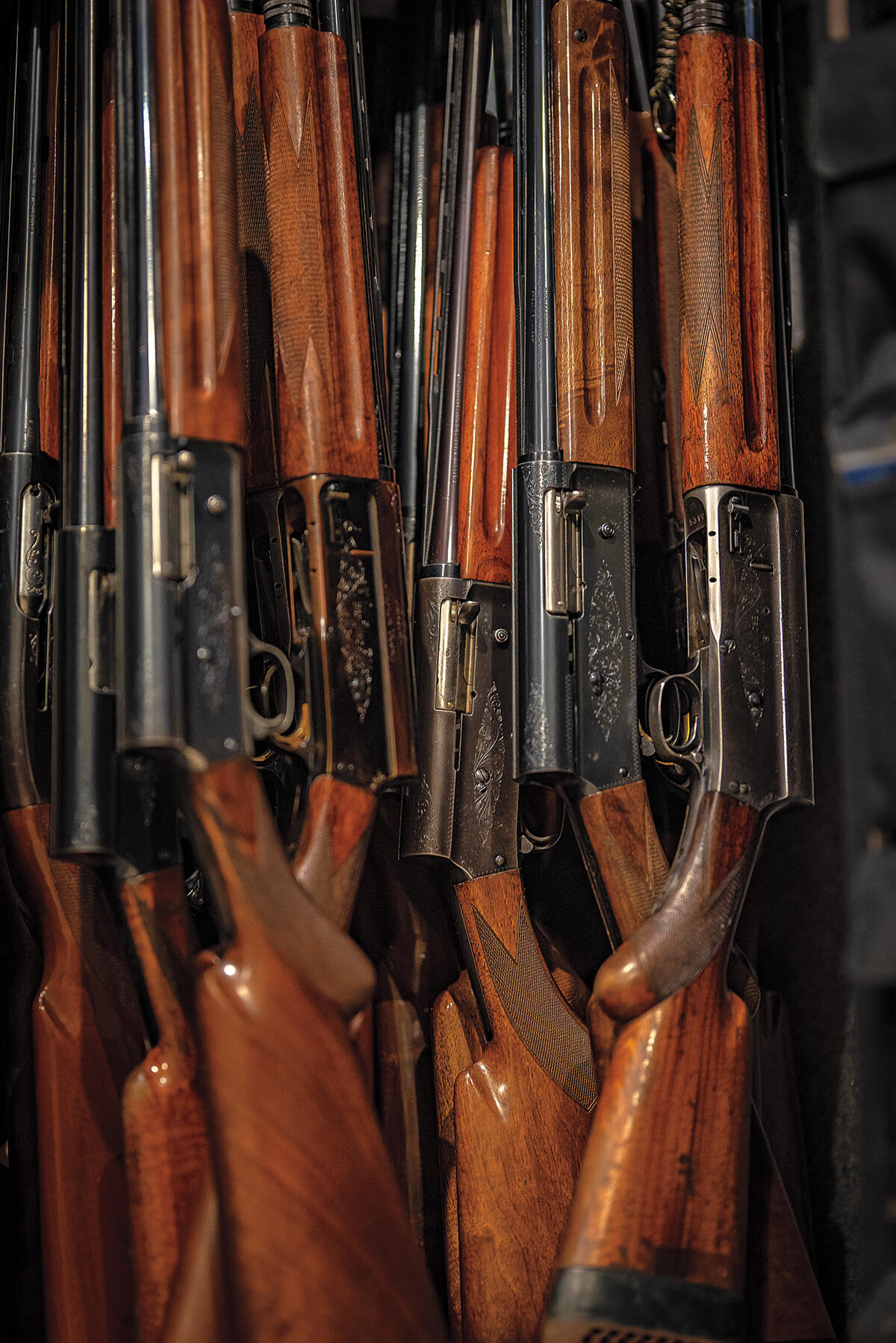The Belgian Brownings
Many waterfowlers consider these classic shotguns to be among the finest firearms ever employed in a duck blind
Many waterfowlers consider these classic shotguns to be among the finest firearms ever employed in a duck blind


Millions of John Browning’s Auto-5 shotguns were manufactured by Fabrique Nationale in Belgium. Thanks to the development of modern nontoxic shot that is safe for older guns, you can still enjoy shooting one of these legends in the marsh or duck woods.
From 1903 until the nontoxic shot era, the Belgian-made Browning Auto-5 reigned as the ultimate in quality and reliability for duck and goose hunters. This revolutionary shotgun could have been a Winchester, and it was almost a Remington, but it ultimately fell to the Belgian craftsmen of Fabrique Nationale to make John Browning’s invention a reality. Browning’s collaboration with Fabrique Nationale was not limited to the Auto-5, however. The company has produced many of Browning’s designs, and it continues to do so today. Here, we’ll look at three classic Belgian Brownings and how you can make one of them your own.
Designing a semiautomatic shotgun presented John Browning with a unique and especially difficult challenge. Unlike military weapons, a sporting semiauto had to function properly with a wide range of cartridges of varying pressures. Browning eventually hit upon a long-recoil system, in which the barrel and bolt moved together over the length of the shell, ejecting it on the front-stroke. User-adjustable friction rings allowed the gun to work with a variety of light and heavy loads.
By 1899, Browning had a design for a new semiauto ready to show to Winchester, with whom he had a long relationship. Certain that the Auto-5 would be a huge success, he asked for royalties on the design, rather than selling it to Winchester outright. Winchester president T.G. Bennett wasn’t convinced by the Auto-5 and didn’t want to offer royalties. The two men argued, tempers flared, and Browning’s relationship with Winchester ended on the spot.
Remington president Marcellus Hartley expressed strong interest in the gun, but, with tragically bad timing, Hartley died of a sudden heart attack as Browning waited outside his office to show him the prototype.
Browning’s next stop was the Fabrique Nationale factory in Belgium, which was already producing a .32-caliber Browning pistol and was eager to work with Browning again. The company began production of the Auto-5 in 1903 and continued, with interruptions for world wars, until 1973. Browning did also license the gun to Remington, which manufactured it as the Model 11 (Remington also made Auto-5s from 1940 to 1946), and to Savage, which called their version the 720. Although 850,000 Model 11s were made, neither it nor the Savage earned the prestige of the Belgian version.
Browning was at the Fabrique Nationale factory working on an over/under shotgun he called the Superposed when he died of heart failure in 1926. At the time the only stacked double-barrel shotguns were high-end British guns, and Browning foresaw a market for an over/under at a price ordinary people could afford. His son, Val, finished the gun, which was introduced in 1931. During the prosperous times of the ’50s and ’60s, Americans bought the Superposed just as John Browning believed they would. Like the Auto-5, it is regarded as a classic, and more than a few Superposed shotguns have seen the sunrise in a marsh.
There was one more Belgian Browning shotgun, the lesser-known Double Automatic, designed by Val Browning. A two-shot, short-recoil semiauto 12-gauge, it came in models as light as 6 pounds for upland bird hunting and was made from 1955 to 1971.
The recent resurgence of bismuth shot means all those Belgian Brownings can go duck hunting again. With over 2.7 million Auto-5s made from 1903 to 1998, and over 250,000 Superposed shotguns sold, you can still find one of these classics to hunt with. Prices for these storied scatterguns go up as bore sizes decrease, but you can buy and shoot one of the 12-gauges for less than you’d pay for a modern top-of-the-line 3 1/2-inch semiauto if you’d like to hunt with a working piece of waterfowling history.
Ducks Unlimited uses cookies to enhance your browsing experience, optimize site functionality, analyze traffic, and deliver personalized advertising through third parties. By continuing to use this site, you agree to our use of cookies. View Privacy Policy